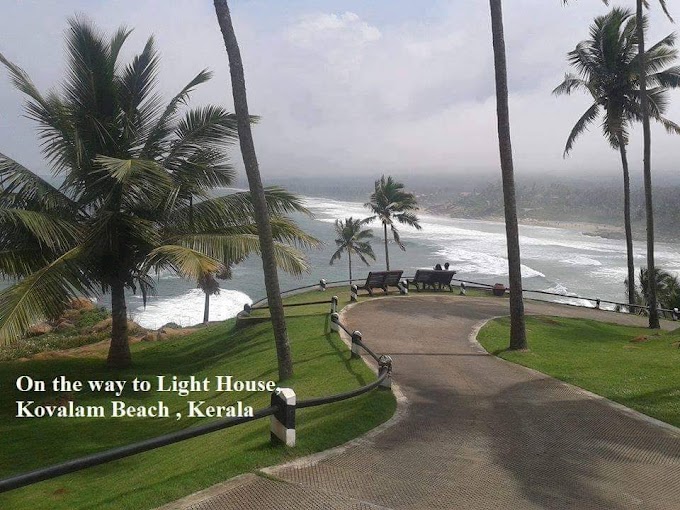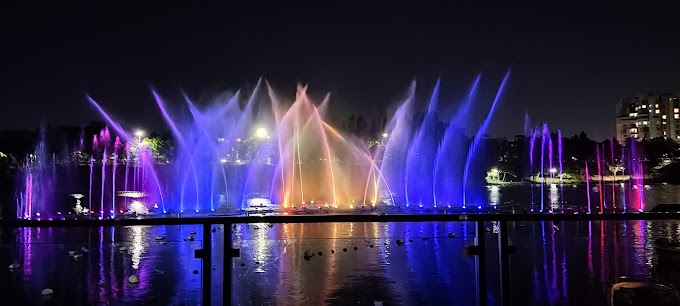In the 9th Century A.D. Alkinda, also known as Alkindus demonstrated that ‘Light from the Right side of the Flame will pass through the Aperture and End up on the Left side of the screen while light from the Left side of the flame will pass through the Aperture and End up on the Right side of the screen’. In the 13th Century Roger Bacon of England described the use of Camera Obscura for safe observation of the Eclipse. The term Camera Obscura was first used by Johannes Keplar, an astronomer, in the year 1604. In the sixteenth century many artists, including Michel Angelo and Leonardo da Vinci, used the "camera obscura" to help them draw pictures. A person or object would be outside the dark room and their image was reflected on a piece of paper and the artist would trace it. This is a the drawing of a camera obscura done in 1646. This drawing shows an outer shell with lenses in the center of each wall and an inner shell with transparent paper for drawing. The artist needed to enter by a trap door in the bottom. The camera obscura was used in the painting of this picture.
It was painted about 1660 by Jan Van Der Meer van Delft. His paintings are known for their "camera-like" detail and quality - but were painted 150 years before the invention of the camera He painted this image in 1665. He was a great master who made paintings which still amaze people about their photographic look. The camera obscura was made portable by the eighteenth century by putting it in a box with a pinhole on one side and a glass screen on the other. Light coming through this pinhole projected an image onto the glass screen, where the artist could easily trace it by hand. Artists soon discovered that they could obtain an even sharper image by using a small lens in place of the pinhole. In 1727 a German professor, Johann Schulze, observed that silver salts darkened when
exposed to light. But the idea of making pictures using this information did not occur to him. Daguerre's process named as daguerreotype, was announced to the world on January 7, 1839. Six month later the French government gave Daguerre and Isidore, Niepce's son, a lifetime pensions in exchange for all rights to their invention. The daguerreotype was to become France's gift to the world.
The first daguerreotype which was taken in 1839 is a picture of Port Ripetta, In Rome. Three weeks after Daguerre's announcement an English amateur scientist, William Henry Fox Talbot, read about the daguerreotype and realized that this invention was a lot like his own unpublicized process that he called photogenic drawing. He quickly tried to claim priority over Daguerre and presented his process in a paper to the Royal Society in London. Talbot's process he first coated a sheet of drawing paper with the chemical compound silver chloride and then he put it in a camera obscura where it produced an image with the tones reversed i.e. a negative. He then placed the negative against another coated sheet of paper and produce a positive image. Talbot did not find a way to make the image permanent until a month after Daguerre's announcement, but his process, later improved and renamed the collotype, is the basis for most modern film technology which relies on negatives and produces
many positive prints. The earlier Models of Camera Obscura were large - from the size of a room to the size of the human being, and it is in 18th Century that the compact one the more easily portable and user friendly camera were introduced. The 18th Century artist used a Camera Obscura to outline their Subject.
Pinhole cameras and Camera Obscura were later used by Joseph Niepce in 1826, who had made the first permanent Image. He managed to burn it on to a chemical coated pewter plate. He called it Heliography which means Drawing Sun light. It was first black and white image and took 8 hours of exposure. Later both Louis Daguerre and Fox Talbot they also used these Cameras. Chemical Process Another thing to note is that while discoveries, researches and inventions were going on in the field of developing a camera, simultaneously in the 12th Century Albertus Magnus discovered Silver Nitrate and in the 16th Century Georges Fabricius discovered Silver Chloride. In 1694 Wilhelm Homberg described how light darkened some chemicals. The Term photography There are various school of thoughts as to the use of the term Photography. The credit for development of modern photography goes to Daguerre of France and Fox Tolbot of London, who simultaneously invented photography in 1839. However it is John Herschel who is credited to have first introduced the word Photography which he applied in the terms of Negative and Positive. But actually the term Photography had already been coined by Franch-Brazillian Hercules Florence in 1834. The term Photography has been derived from Greek word Photos which means Light and Graphos which means to writing, therefore Photography means Writing with Light. In this case Light is the medium and Camera is the Instrument which is used to make Pictures. The first picture of a person Daguerre was the first one to take a Picture of a person, it is a beautiful picture of a street in which a person is getting his shoe shined. From his own window Daguerre put his camera facing a street in which there were lots of people and carriages moving about, but to his good luck, this man was recorded. Simply because the exposure was very long and all the people and carriages who were moving along the street could not be recorded as they were moving out of the frame. Firsts in Photography From the first permanent picture taken by Niepce in 1826 to the picture of the first person in 1839 it took 13 Years. At the same time after this there was series of firsts in the field of Photography. For example the first photo of Lightning was taken in 1847, the first picture of war was also taken in same year, the first photo of birds eye view was taken in 1858 and the first coloured photo in 1861, The first
Action shot was taken in 1878 and the first Tornado was shot in 1884 and in 1889 the first ever photo was published in The National Geographic, the first underwater colour picture was taken in 1926, the first high speed photo in 1940’s. In 1940s the Analog Camera of modern times was introduced and thus the list of First is going on and it continues to be there. Everyone is trying to do whatever it
can for the first time and show it to the world. The Birth of Modern Photography Ever since 1839 the face of Photography has changed and it is progressing day by day and it has been quite fast and inventive way of working. It is now that modern Photography started gaining roots and progressively has reached present hi-tech level and today Photography is recognized as a fine art.
The Arrival of George Eastman and his Kodak Company The Arrival of George Eastman in the year 1880, he changes the entire world of photography. He introduced Roll film cameras. He also introduced his own Cameras and patented them. The first camera that he designed was only for roll
films. In 1892 he established Eastman Kodak Company in Rosester, New York. It was one of the first mass product standardised photography equipment. This company also manufactured flexible transparent film devised by Eastman in 1889 which proved vital to the subsequent development of photography and also motion picture industry. There is an interesting story about Kodak Camera it weight little over 2 pounds and it was over 6 inches in length and it could take sharp pictures from 8 feet onwards, it had only one speed and only one aperture. It came with a roll which ook hundred circular images. It cost 25 Dollars and once the roll was finished by
the Photographer you had to send entire camera along with the exposures to the
Kodak Company. Kodak company would process the film, make the prints and
return you the camera along with another roll of hundred exposures. Their slogan
was, “You Press the Button and we do the Rest”.
Introduction of New Cameras In 1880 the first Twin Lens Reflex (TLR) camera was introduced and there after people started looking for small cameras, one would like to say pocket cameras,
and it is in the 1952 that Pentax or Asahiflex Japan’s first Single Lens Reflex Camera was introduced.
The Digital Camera
The first Digital Camera was introduced by Sony and it was known as Sony CD Mavica in 1981. In 1991 Kodak brought to the world Kodak DCS 10 and made it
commercially available. Coming to the films, in 1935 KodaChrome introduced Colour reversal Film and in 1963 Polaroid was introduced. In 2007 a survey was
carried out and it was found at that time nearly 68% of the photographers wanted to continue with the commercial roll film simply because of its picture quality. But now it is felt that the trend is changing and people are switching over to the digital photography. As far as commercial aspects are concerned the great Ansel Adams sold his first Portfolio for $3900. In February 2007 Sotheby’s London sold
Andreas Gursky’s “99cent II Diptychon” for $3.34 million, the second print of the same picture was sold $2.8 million and third print was sold for $2.25 million. Today even Indian Photographers are getting lacs for their print.
Photographic Processes
Monochrome Process
We all know that originally the photography was in black and white or monochrome. Between Black and Pure white there are Gray tones in between, now these tones are the ones which makes a picture give a classic picture. The more the Gray tones the better there picture is. And therefore one should try to get picture with as many grey tones as possible, another point to note is that while Black and White picture is considered between Pure Black and Pure White there is a thing called cyanotype pictures which are also in the same category as Black and White. Now in this there is Blue tone instead of Pure White Or Pure Black tone. Another tone which is available is Albumem where in the tones are brownish. Today we can produce Black and White picture through digital cameras also and monochrome pictures will always have a special place in the world of Photography because of their Appeal. The permanence due to the Silver halide based chemicals used in process make it long lasting and of archival value.
The Color Process
The first permanent colour picture was taken in 1861 using three colour separation principle. Take three separate black and white photographs using Red, Green, and Blue filters. These provides us the three basic channels required to create an image. Transparent prints of the Images could be projected through similar colour filters and super imposed on the projection screen. This is Additive method of Colour Reproduction.
Autochrome
The first commercially successful colour process was introduced by Lumier Brothers in 1907. In 1935 Kodachrome introduced the first integrated tri pack and it captured three colour component in multi layer emulsion. A colour print in Paper could be produced by superimposing carbon print of three images made in their complementary colours that is the subtractive method of colour reproduction which is Cyan, Magenta and Yellow. Instant colour film used an Special Camera which yielded a unique finished colour print only a minute or two after the exposure, was introduced by a Polaroid in 1963. Full Spectrum, Ultraviolet and Infrared Ultra Violet and Infra-Red Films have been available for many a decade and employed in a variety of photographic avenues leading to new artistic visions. Modified Digital Cameras can detect some ultraviolet, all of the visible and much of the Infra-Red Spectrum. And, off the shelf Digital Cameras contains Infra-Red hot mirror filters that blocks most of the Infra-Red and a bit of Ultraviolet that otherwise would be detected by the sensor. Uses of Full Spectrum Photography are for Fine Art Photography, Geology, Forensics and Law Enforcement and even some claimed use in Ghost Hunting.
Digital Process
In 1981 Sony Introduced Sony Mavica a Digital Camera using Charged Couple Device (CCD) this eliminated the need for a Film Camera. While Mavica saved Images to Disk the images were displayed on Television and the camera was not fully digital. In 1991 Kodak introduced its first digital single lens reflex camera, it was very expensive and only Photo Journalist and Commercial Photographers could use it. People who were working commercially were also using it but for common man it was not easy to use. The other was that digital camera recorded the picture on a CCD and while the analog camera recorded on the celluloid where there were chemical changes. The next thing is that in a digital camera, in a digital photograph one can do lot of manipulation which is really not possible in the case of a film. Like that there are many things which are in favour of CCD and at the same time people prefer to use film camera simply because of couple of reasons:
Films superiority in capturing more information on medium and large format
films.
Creating a traditional photographic look
Capturing shadow and highlighting details
The wide exposure latitude of film and
Archival storage
Careers in Photography
There are quite a few careers available, however some of these are:
Portraiture
Advertising
Press
Industrial
Medical
Cinematography which is most creative of all,
Wedding Photography which is most popular of all.
Photography Today
Today Photography is considered to be one of the most versatile mediums for recording people, places and events. It has great room for expressing creativity and thought process of an individual. It actually is the depiction of the personality of the Photographer and that’s how pictures of the same subject treated in the same way have different results. It is the view point, it is the vision of the photographer. There are analog Cameras and the Digital cameras available in thousands at an affordable price. The technology involved in the digital photography is improving continuously and that day doesn’t seem very far when digital photography will take over film photography.

























0 Comments